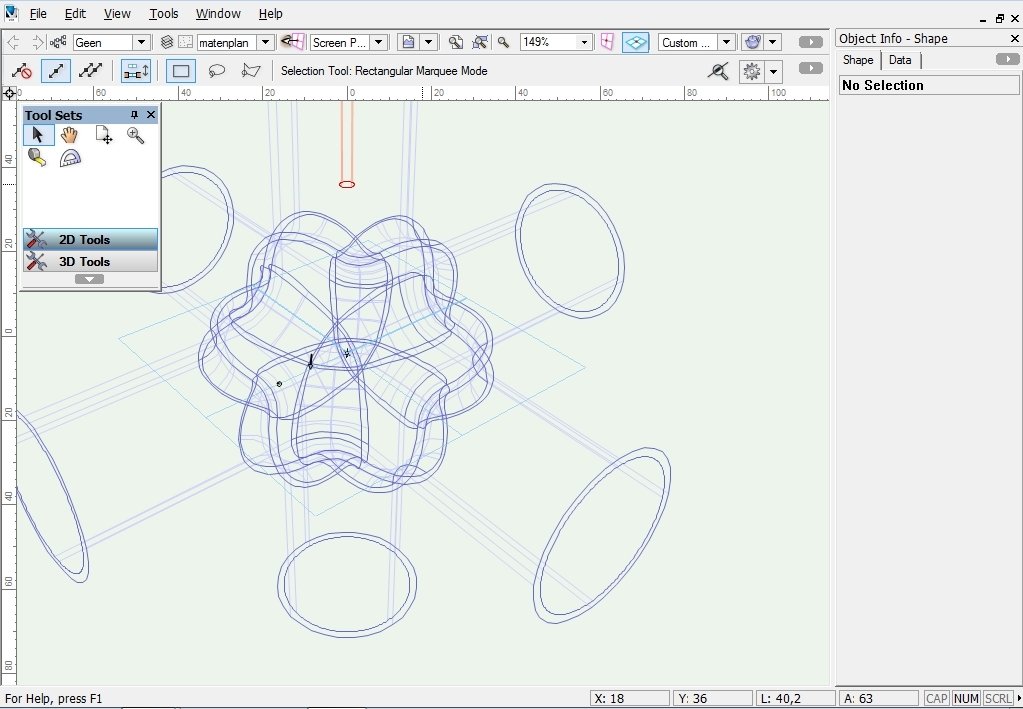
By default, Vectorworks sheet layers export as DXF paper space layouts, with normal viewports exported directly, and section viewports exported as blocks.There is an option to export design layer viewports as part of the master document instead. Annotations become paper space objects on top of the viewports. AutoCAD requires all paper space objects to be either above or below the viewports, but not both, so any objects or annotations that appear below the viewports in the Vectorworks file will appear above the viewports in the AutoCAD file.

If sheet layers are exported, all design layers referenced from viewports on the sheet layers are exported to model space in top view without scaling, and viewports are created in paper space layouts to show the various views and scales.Therefore, avoid putting anything underneath viewports in your Vectorworks files. Sheets should generally look and print as expected (though without rendering modes set due to some AutoCAD issues), but the single model space may have many overlapping objects and may not be as usable. There is an option to export the selected sheet layers as separate DXF/DWG files. Since AutoCAD has only one model space, and it does not have hybrid 2D/3D objects, it is sometimes necessary for the Vectorworks program to export the design layers as one or more blocks with special DXF layer names to control the block visibility.In addition, there is an option to export sheet layer viewports as 2D graphics to model space (each layer as a separate file). For example, a design layer called “Foundation” might export as blocks named “Foundation (2D)” and “Foundation (3D),” with associated DXF layers named “_Foundation (2D)” and “_Foundation (3D).” The blocks will be inserted in model space and assigned to those DXF layers. I’m the author of several of the Vectorworks training manuals.When you export sheet layers, the Vectorworks program optimizes the translation to preserve the look of the sheets, at the cost of possibly adding some complexity and decreasing the ease of editing items in model space.Viewports that should hide either the 2D or 3D objects will freeze or thaw the appropriate DXF layer. I am an architect trained in New Zealand and in the United Kingdom with over 25 years of industry experience. I’m Jonathan Pickup, the leader in VectorWorks training. Who is the leader in Vectorworks training? An error occurred while retrieving sharing information.
VECTORWORKS VIEWER 3D ANDROID
You can find my main web site at: You will also find iPad and Android training movies here. Since 2007 I have been running an online training website that has a worldwide base of subscribers that get together online monthly to improve their use of Vectorworks. Where can I find Vectorworks training online?
VECTORWORKS VIEWER 3D SOFTWARE
We serve over half a million in the AEC, landscape & entertainment indust… The official YouTube channel of global design & BIM software developer Vectorworks. © 2021 Google LLC Vectorworks – YouTube The official YouTube channel of global design & BIM software developer Vectorworks. VectorWorks is a good drafting/illustrating/rendering tool but is limited in its design to cater to projects on a comparatively smaller scale. The reason why VectorWorks couldn’t out do AutoCAD is the fact that AutoCAD is the best package for structural, large-scale design. The view changes and a check mark displays in front of the active view in the Current View/Standard Views list. To change among the different views: Select View > Standard Views, and then select a view. Select Modify > Convert > Convert to Generic Solids.To convert an object into a generic solid:

How do you create a solid object in Vectorworks? The radius can also be set in the Data bar.

Also there are Facebook groups which can be helpful. There are always two, three or even more ways to do something with this software. can occasionally show you some of the best tricks, techniques and shortcuts then even better. VectorWorks can become quite addictive if you enjoy learning new skills. Click and draw a line to indicate the view direction the line starting point indicates the viewer position and the line end point indicates the point the viewer is looking towards (look toward point).


 0 kommentar(er)
0 kommentar(er)
